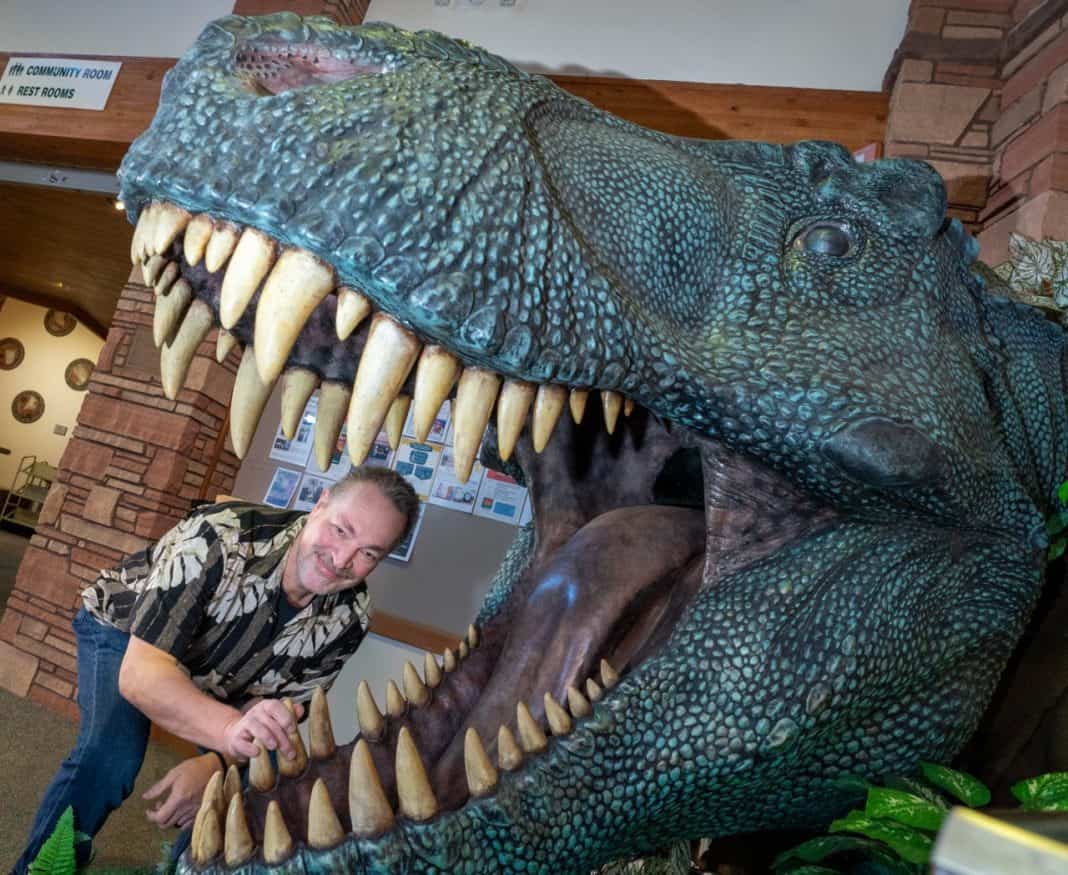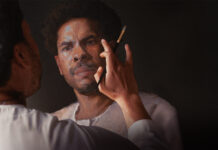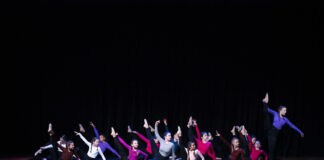Since the beginning of time, man has searched the earth for evidence of its past. While some have looked for clues to its mystery, one man had discovered a way to bring the mystery back to life.
Sedona resident, Michael Trcic had something to do with the reintroduction of dinosaurs and humans, two species separated by millions of years of evolution thrown back in the mix together over 28 years ago.
However, it was not Trcic alone who concocted this whole theory where science defied evolution; where genetics mastered creation; and extinction is something that occurred in the past. In other words – life uh, finds a way.
“Jurassic Park,” a 1993 film based on a 1990 novel by Michael Crichton, was centered on a disastrous attempt to create a theme park of cloned dinosaurs. Trcic helped create one of the film’s most iconic creatures.
In Hollywood
Trcic had worked in Hollywood for many years as a special effects artist for films and television. He worked closely with Stanley Winston, a visual effects master who was best known for his work on all the “Terminator” and “Jurassic Park” movies, “Batman Returns,” “Aliens” and others. Winston was selected by Steven Spielberg to create the animatronic dinosaurs for “Jurassic Park” — the Tyrannosaurus rex, Triceratops, Brachiosaurus, Dilophosaurus and Velociraptors — were all brought to life by Winston and his team.
“I was just finishing up working on ‘Terminator 2: Judgment Day’ and rumor had it that ‘Jurassic Park’ was purchased by Amblin Entertainment and that Steven Spielberg was going to direct it. Whatever special effects were needed for that film, I was going to drop what I was doing and do it,” Trcic said.
In 1990, as “Terminator 2” was almost completed, Winston called Trcic into his office and told him that he was going to sculpt the T-Rex. As fate would have it, the project fell right into Trcic’s lap.
As one of the lead supervisors for special effects on the Tyrannosaurus rex, Trcic said that this experience was greater than building a maquette of a dinosaur.
“The first drawings were based on Stan Winston’s vision,” Trcic said. “He wanted the T-Rex to look scary and fierce-looking — this is how the Hollywood design process began.”
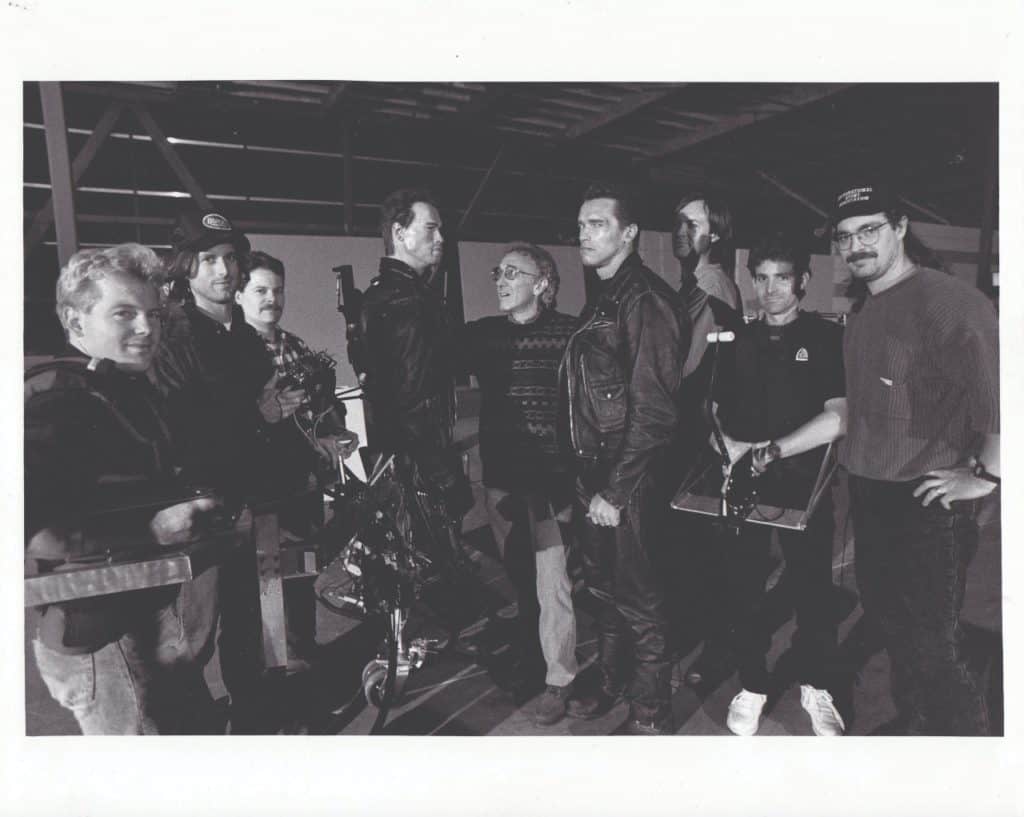
fourth from right, and his body double. Courtesy photo
The drawing was just a guideline to building the T-Rex. Trcic’s prehistoric creation took 14 weeks to complete. It was 40 feet long and 18 feet high, with 6-inch teeth, and was covered with five tons of clay. Over 35 people assisted in sculpting this enormous life-sized dinosaur.
“Silicone molds were made and once the outside was sculptured, I had to work on the inside,” Trcic said. “I can’t tell you how many times I banged my head on those teeth. They were plaster and sharp.”
Not only was Trcic excited about working on the largest life-sized creature in his special effects career, he now had the opportunity to meet Spielberg and George Lucas in person.
“It was time for a dog and pony show,” Trcic said. “We were up all night, working ’round-the-clock to get everything together for Spielberg and Lucas, who wanted to see what we created. They walked in with an entourage. George Lucas looked up at the T-Rex and just walked away. Neither said anything.”
While the meeting of the greatest film directors was a letdown, the production of creating this dinosaur was also not an easy task. “Jurassic Park” was on the cutting edge of film’s own cinematic evolution. Groundbreaking computer graphics were incorporated into the film’s visual effects. While creating the molds for the T-Rex, a casting was sent to Industrial Lights & Magic, the motion picture visual effects company that was founded by Lucas.
“My next assignment was to sculpt the stop-motion model that would be used for medium and long shots of the T-Rex walking through Jurassic Park. It was exciting to have something I was doing to be animated by Phil Tippett.”
Tippett is an Oscar and Emmy Award-winning visual effects supervisor and producer who specializes in creature design, stop-motion and computerized character animation.
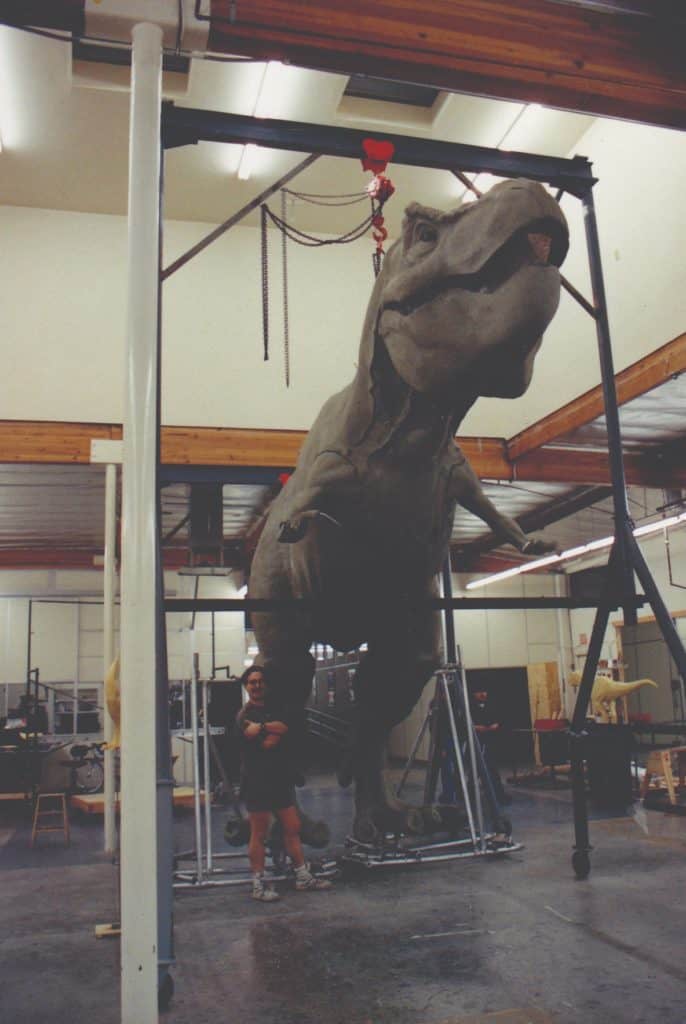
Trippett “was a dinosaur guy, and I knew he would do it accurately,” Trcic said.
“We saw the first initial test footage from ILM — all from computer graphics animation,” Trcic said. “They created this living, breathing, walking, Tyrannosaurus rex, and I knew movies would never be the same. When we saw the footage, it blew me away and I knew that CG was here to stay. We realized that with computer generation, there wasn’t a need to do full-scale puppetry any longer and a lot of work that we did was going by the wayside. The writing was on the wall.”
However, in retrospect, only four to five minutes of the 14 to 15 total minutes of dinosaur scenes were entirely computer-generated. All the other visual effects were created using the various physical dinosaur models.
“Jurassic Park” won the 1993 Academy Award for Best Visual Effects as well as the BAFTA Award for Best Special Visual Effects.
It All Started with ‘King Kong’
The 1933 movie “King Kong” was well ahead of its time and is known for its ground-breaking use of special effects such as stop-motion animation, matte painting, rear projection and miniatures, all conceived decades before the digital age. At that time, the fictional gorilla was made with an armature, created with foam, liquid rubber and rabbit fur.
This film caught 6-year-old Trcic’s attention, and he knew right from the start that he wanted to become a film animator.
“I watched the movie on TV and it captivated me,” he said. “It created a strong desire to learn what made King Kong move and what made the dinosaurs move. I knew it wasn’t real, but still had no idea how it was done, and it led me on a quest to try and learn how the effects were created.”
On the set of “Jurassic Park,” Trcic’s life came full circle.
“One of my fondest memories was getting to meet Fay Wray [the actress in the 1933 King Kong film],” he said. “Steven Spielberg knew her and invited her to come to the set [of Jurassic Park], so I spent all my free time talking to her about ‘King Kong.’ She was fascinated that after all of these years, people were still interested in that movie. I told her that she is responsible for me being here.”
Trcic says that he was on set talking to the star of one of the most technically advanced movies from the early era of filmmaking to actually being on set for the most technologically advanced film about dinosaurs in “Jurassic Park.”
“‘King Kong’ broke new ground in sound, music and special effects, much the same way ‘Jurassic Park’ has done,” Trcic said. “The computer graphics used in ‘Jurassic Park’ shattered the limits that had previously been established. Now, anything imagined could be put on film.
“Life sure is funny. I have to say for me that was the high point of my whole career — just getting to spend the afternoon talking to her [Fay Wray].”
Trcic says that he has always been at the right place at the right time. Throughout his career, he met many people who were connected in the industry.
“In the spring of 1984, I was hired by Tom Savini to work on the ‘Day of the Dead’ film. It was a dream come true. Not only did I get to sculpt numerous zombies, but also got to play one. After ‘Day of the Dead,’ my wife, Christine, and I moved from Pittsburgh to Los Angeles, and my professional career took off.”
Trcic’s work includes a multitude of horror films, “Glory,” “Batman Returns,” “Terminator 2” and a few others. He has worked alongside many well-established directors, including Spielberg, Tim Burton, George Romero, Sam Raimi and James Cameron. He has also worked in television animation, including Discovery Channel’s 2002 documentary film, “When Dinosaurs Roamed America.”
Trcic consulted with paleontologists to achieve a high standard of accuracy for his work.
He also has provided dinosaur sculpture work for a variety of media and institutions, including IMAX, The University of Chicago, The National Geographic Society, Disney and the Arizona Museum of Natural History, where his life-sized bronze Dilophosaurus sculpture is featured.
Life after Dinosaurs
“The timing was right for me. I had been looking to get out of the industry because it wasn’t satisfying to me anymore. I wanted to work on movies like the type of movies that inspired me when I was a kid, ‘King Kong’ or the classic ‘Frankenstein’ or ‘Dracula’ movies, but by the late ’80s, early ’90s, they weren’t making movies like that anymore.”
Today, Trcic lives in Sedona with his wife, Christine. They have two children: Their son, Colton, is a video marketing manager for a company in Scottsdale and their daughter, Collier, is taking online classes for digital art and animation.
“I tried my best to discourage my kids from the industry,” he said jokingly.
Currently, Trcic is working on sculptures of human anatomy, creating pieces that depict life in the American West. His paintings of farm animals are a little more whimsical.
“I have a beautiful blank canvas that I am trying to get past. The blank canvas — it’s just gorgeous. It is white, smooth, clean and I don’t want to ruin it. I am going to have to splatter paint on it just to get going.”
Is it possible that the evolution of the prehistoric creatures including the Tyrannosaurus rex may be found roaming the red rocks of Sedona? It may be closer than you think. A few dinosaurs have found their way into Trcic’s sculptures, and one lone gigantic T-Rex head — the one that used to lie in his front yard — can now be found at the Sedona Public Library, leaving behind just a trace of dinosaurs in the land before time.
















